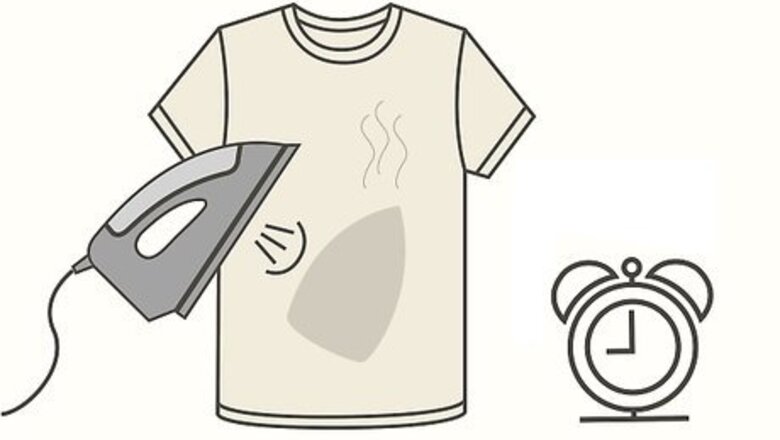
views
Pre-treating and Washing
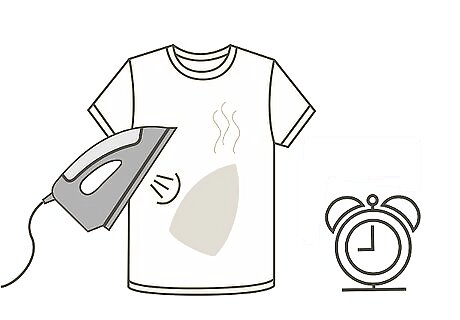
Work quickly. Like many common types of clothing stains, scorch marks are easiest to treat right after they've occurred. This article contains a few different methods for removing scorch marks from your clothing. Regardless of whether you use the method in this section or one of the other ones, you'll always want to immediately move your scorched fabric away from the offending heat source and start cleaning it as soon as you notice a scorch mark. Don't let a scorched piece of clothing or fabric sit out while you finish your ironing — the amount of time you take to begin treating the mark can make the difference between the total removal of the stain and the lingering annoyance of a dark spot on your fabric.
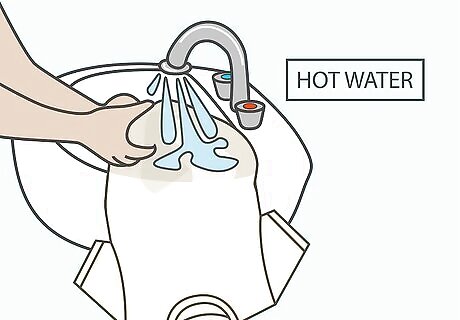
Rinse the item in warm water. To begin pre-treating your clothing or fabric, give it a quick rinse. This serves two purposes. First, it prepares it to absorb the laundry detergent you'll treat it with in the next step. Second, it will wash away any loose singed matter, giving you a better idea of how bad your scorch mark actually is.

Rub laundry detergent into the stain. Using your fingers, gently rub your clothing's normal laundry detergent into the scorch mark. By giving the detergent a chance to "set" into the stain before you wash the item, you increase its stain-removing power. Don't use bleach or other specialty cleaning solutions yet — you'll have a chance to do this in the next step. Liquid detergent works best for this because it can seep between the tightly-woven fibers of the fabric to treat the mark on a microscopic level. However, for this (and other common stain-removal tasks) you can also use powdered detergent if you mix it with a little water first to form a loose paste.
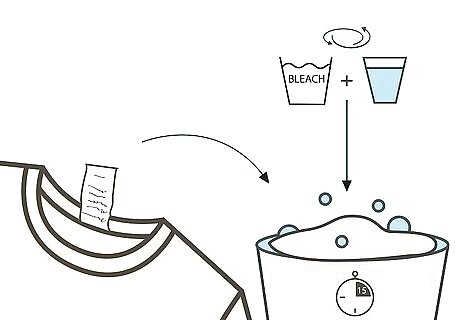
Optionally, soak in water with bleach. If the fabric of your item is made from a material that is safe to use with bleach, you may want to pre-treat the fabric even further by letting it soak for about 15 minutes in a solution of water and bleach. Use a capful or two of bleach for about every gallon of water you use. Stir the mixture occasionally to ensure it soaks evenly. If you're unsure of whether your item is made of a bleach-safe fabric, check its care label. As a general rule, wool, silk, mohair, and non-colorfast fabrics are generally not suitable for cleaning with bleach.
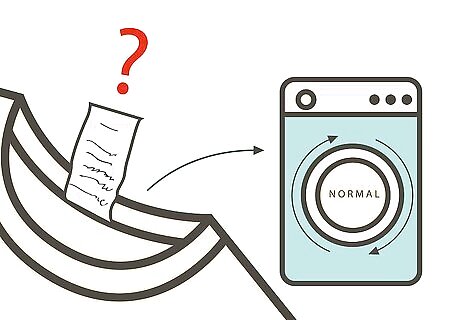
Launder. When you've finished pre-treating your fabric, throw it in the washing machine and begin a normal cycle. In other words, use the wash settings recommended on the garment's care label. You may also include any other clothes that you need to wash as long as they can be safely washed with the settings and cleaning products you are using. As above, you may also use bleach or other cleaning products here if they are normally safe for the fabric.
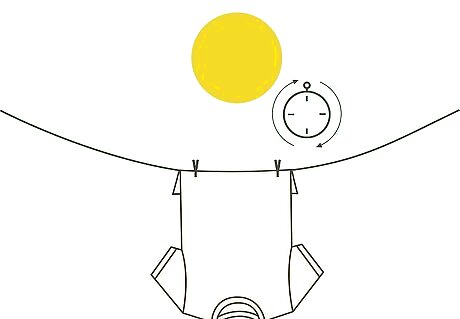
Hang outside to dry in direct sunlight. Remove your item from the washer and check the scorch mark — hopefully, it will be less visible than before. You may need to repeat the wash cycle several times for ideal results. To dry your fabric, rather than using a dryer, try drying it in the sunlight if there is reasonable weather outside. The sun's rays are well-known to lighten all types of dark, unsightly stains in fabric, including scorch marks. Don't leave your item in the sun for more than a day or so. Over time, sunlight can gradually weaken fabric, making it more susceptible to damage and causing bright colors to fade.

Understand that damage can sometimes be permanent. Unfortunately, especially bad scorch marks may not be removable even with repeated treatment. In these cases, you may need to try covering the mark, cutting it out and patching it, discarding the item, or giving it away. Alternatively, you can also try recycling your fabric for another purpose.
Treating With Hydrogen Peroxide
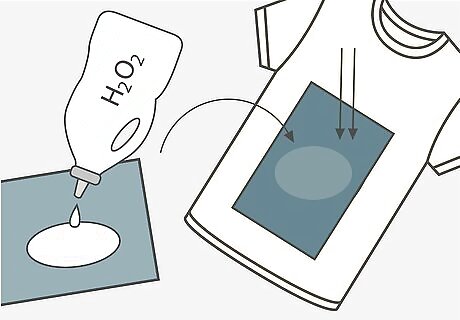
Cover the stain with a hydrogen peroxide-soaked cloth. This unconventional trick can work surprisingly well, making it a favorite of many amateur cleaners on the internet. To start, find an old rag and dampen it with hydrogen peroxide. Lay your scorched item flat on your work surface and cover the scorch with the damp rag. Hydrogen peroxide, a cleaning solution with mild bleaching properties, is usually available at grocery stores and pharmacies for quite cheap. If you have ammonia handy, you may also want to splash a few drops directly onto the scorch mark itself. Though ammonia and hydrogen peroxide are safe to use with each other (unlike ammonia and bleach), this isn't a mixture you'll want to ingest or rub into your face, so be sure to wash your hands when you're done.
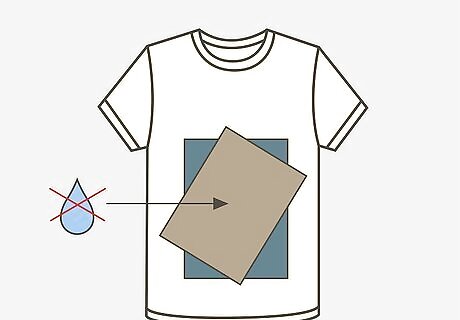
Cover this with a dry cloth. Next, put a clean, dry rag on top of the hydrogen peroxide-soaked rag. To be perfectly clear, you want to have three things stacked on your work surface: on the bottom, your scorched item, in the middle, your peroxide rag, and on top, your dry rag.
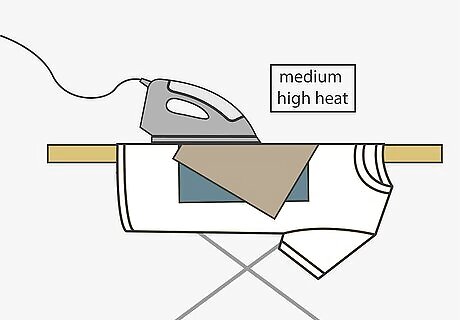
Iron on medium-high heat. Let your iron heat up to a fairly hot (but not extremely high) temperature. Start gently rubbing the top cloth. The heat will gradually permeate through the layers and into your scorched item, where it will help the hydrogen peroxide work into the scorch mark and start to remove it. Be patient — this process can take some time.
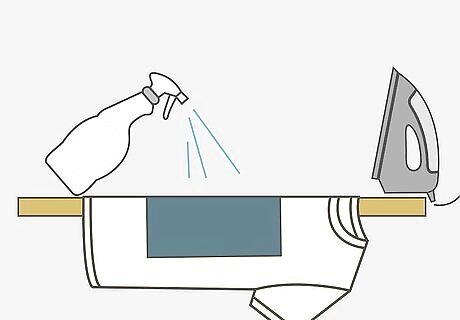
Replace liquids as they dry out. Check on your scorch mark frequently as you iron the top cloth. For mild to moderate scorch marks, you should notice steady, gradual improvement. If, at any point, you notice that the middle cloth is starting to dry out, remove it and give it another application of hydrogen peroxide. Similarly, if you initially sprinkled your scorched item with ammonia and you notice that it has dried out, give it a few more drops. Doing this keeps the cleaning process as quick and effective as possible. You'll also want to remove the top cloth and replace it with another if it ever becomes soaked with hydrogen peroxide from the middle cloth. This prevents rust stains on the iron.
Trying a Home Remedy
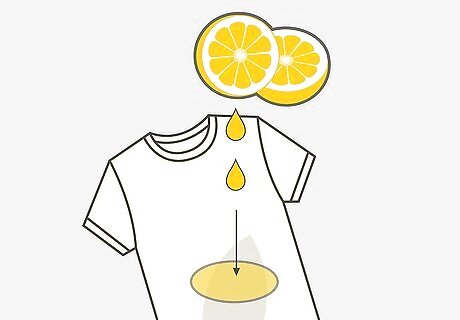
Wash with freshly squeezed lemon juice. If the methods above haven't worked for you, don't worry yet — some sources on the internet recommend a variety of alternate remedies. Though these aren't necessarily guaranteed to work as well as the methods above, they're unlikely to hurt. For starters, try squeezing the juice from a lemon over your item to soak the scorch mark. Drop the item into a container of hot water and let it sit for about 15-30 minutes. Remove and dry as normal. To be safe, don't try this trick with non-bleach-safe fabrics like silk, wool, and so on. Though lemon juice is very mild compared to bleach, some sources report that it can cause minor damage to these types of fabrics.

Rinse with white vinegar. Another trick for removing scorch marks from your clothes is to soak a sponge or rag in white vinegar and rub the scorch mark with it. Let the now-soaked item sit for about 10 to 15 minutes before rinsing with cool water. Dry as normal. Only use white vinegar — never red wine vinegar, apple cider vinegar, or other types, as these can cause new stains which can be hard to remove themselves.
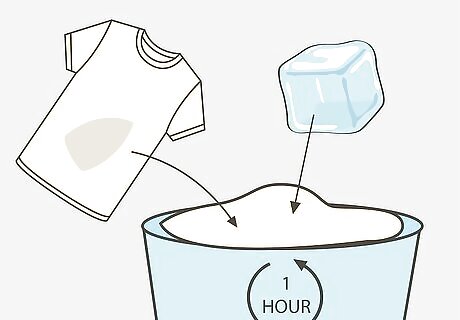
Soak in ice water. If you've just accidentally given your fabric a scorch mark, some sources recommend letting the item soak in ice-cold water before doing anything else. Keep the water cold as the item soaks either by adding ice or moving the container to a freezer. For best results, let the item soak for at least an hour. If you do move your item into a freezer, don't forget about it — though freezing clothing or fabric won't usually damage the item, it will halt the cleaning process.

For bad scorch marks, try scrubbing with an emery pad. Heavy scorch marks may not be removable with any sort of normal cleaning methods. However, in some cases, you may still be able to lessen the visible damage from a scorch mark by using a gentle abrasive like an emery pad to scrape dark burnt material away. This is not guaranteed to work, and if you rub too harshly, it's even possible to wear a new hole in the fabric. However, compared to the possibility of needing to throw the garment out, many may find this risk worth it. For this tactic, you don't necessarily need to use an emery pad — any mild abrasive (like sandpaper, for instance) can work well.



















Comments
0 comment